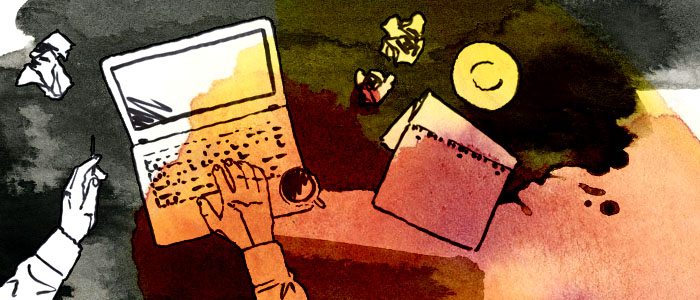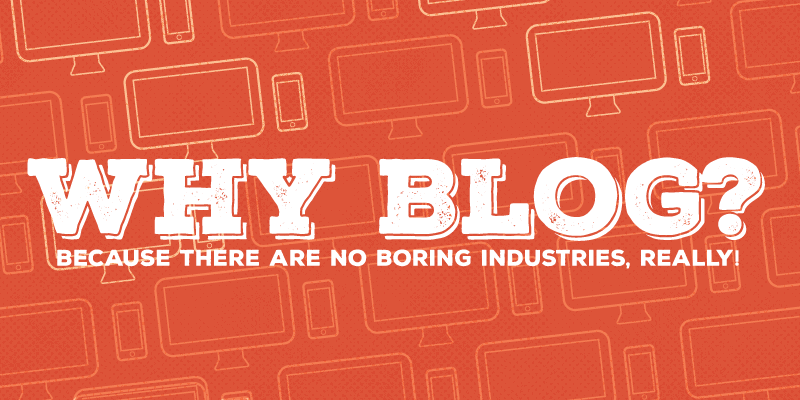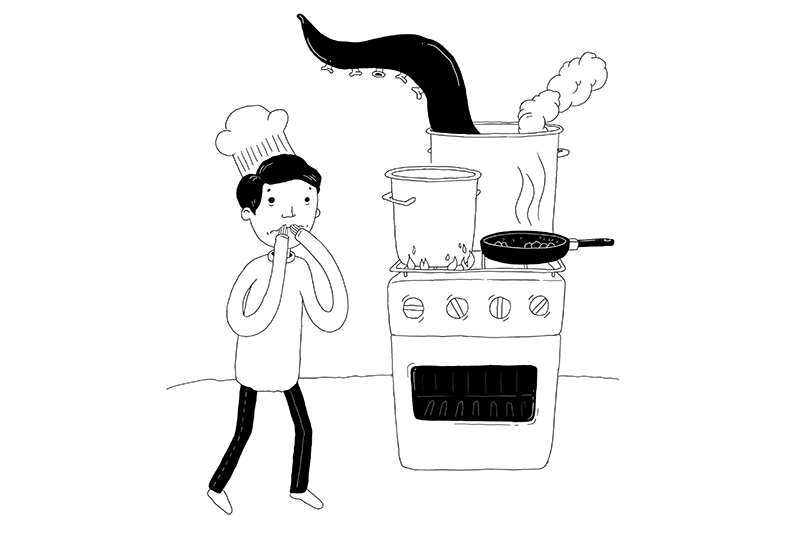Your content is worthy of being shared! Put in the extra effort to make your words immortal.
You’ve mastered visual storytelling and blog storytelling. Social media storytelling is your next step.
Author (and former Senior Advisor for Innovation to the Secretary of State) Alec Ross said, “if Paul Revere had been a modern day citizen, he wouldn’t have ridden down Main Street. He would have Tweeted.”
Now that news streams in faster to Twitter than television, radio or … horse … people look to their feed as a major resource of new information. If you publish information, you belong on Twitter. But if you haven’t worked at a newspaper or magazine, and haven’t learned the art of writing a good headline, you can start with this post instead.
When we first start the social media conversation with a business, it’s interesting to hear their perspectives on social media. The great thing is that most of our clients seem to have a strategy, though they usually include posting a Tweet or Facebook post once — on the day the post goes live. The strategy often ends there.
So, other than the fabulous SEO job we assume they’re doing (or that they’re about to hire us to do), how do people ever see that article again if it’s only promoted the day or week that the blog post goes live? The simple answer is that they don’t.
Even our publishing clients with high blogging frequency sometimes look at us strangely, as if to say, “You mean, I’m supposed to share this more than once?”
It’s safe for me to argue that updating social media and future scheduling social posts is one of the most important factors in storytelling marketing. If you write a great story, but do not share it, who will appreciate and engage with your effort? Even more, how will you ever convert those readers into buyers?
The math is simple: If you share a post once, you’ll get some clicks. If you share it twice, you’ll get double. If you share it three times, you’ll triple the amount of clicks, website traffic, and possible leads.
What we also know is that if your head is in the game for SEO, every article needs to be shared more than just the first day or week. It needs to be shared throughout the year.
How BuzzFarmers sees social media storytelling
When you tell a story, do you tell it the same way every time? Probably not.
And when you’re in a group of people where some have heard you tell the story before, you might tell it even more differently.
If you’re forgetful and tend to tell the same story twice to the same people, you probably even tell it completely differently.
That’s exactly how we see the art of social media storytelling.
Here’s how it goes. We suggest that you start by writing twelve unique Twitter posts and at least two Facebook (B2C) or Linkedin (B2C) posts for each article. G+ and Pinterest also apply here.
Each of them should be unique. Using the below storytelling social media formulas, you’ll schedule these for the first 12 days, and then again for the next 12 months. We call this the BuzzFarmers 12x12x12 method. It’s time consuming, yes, and it’s absolutely worth it. Doing this and scheduling them into the future, will boost all of your SEO efforts on these posts and ensure you’re driving more traffic and potential leads to your website, times twelve.
12 Twitter Storytelling Social Media Formulas
- Title: This is simple, all you need to do is share the strong and alluring title of your post along with the link. Often I’ll make this an image post to give it a little extra pizzazz.
- Title + subhead: Is the title and subhead short enough to share them both on Twitter? Great! If not, simply share the subhead for a different perspective.
- Direct excerpt: Share a brief excerpt directly from the article.
- Summary: People love posts that have good take aways. Prove your post will be worthy of their time, without giving away the whole cow.
- Praise: Tweet @ anybody who was mentioned in the post. This will put your post infront of the people most likely to retweet it.
- Hashtag: If possible (and it’s always possible), include one hashtag in your Tweet, especially if you can find a relevant and popular hashtag.
- Quote: Directly quote something from the article (in quotes). Best if you can @ the person you’re quoting!
- Click Bait: No one likes click-bait. I hate them. But guess what? I still click on them many times a day. Either sensationalize your story, or give them just a short statement that gets them to click.
- First-Person: Do you know someone who would benefit from reading the post? A personal first-person request to share your post is always a good way to encourage your readers to take action online.
- Question: Think of a question related to your post, and ask it online. People love to communicate on social media. Engage your readers, and be sure to acknowledge them when they do answer you!
- Engagement: Taking “the question” Tweet one step further, ask your readers to comment back on your blog. Ask them a question and suggest they leave the answer in the comments section.
- Takeaway: This Tweet will sum up your posting. Give them the answer to the question. Give them your biggest take-away. Up until now, you’ve teased your fans and followers with the milk. Now you’re giving them the whole cow.
Additionally, you can add photos to any of these Tweets. Make sure your site is set up to display Twitter Cards too, which will pull in your featured image.
Now that you’ve written your twelve Tweets, it’s time to schedule them. We’re madly, deeply, truly inlove with the CoSchedule Wordpress plugin, but you can use whatever social scheduling program you like.
Beginning with the day the post goes live, schedule one a day for twelve days. So, for example, if your post were to go live on February 1, you’d share a Tweet a day from 2/1 through 2/12. This will assure your content is seen at some point in the quickly moving world of Twitter. Don’t stop there, though. Schedule into the future for even more optimization. Using the twelve Tweets again, scheduled one Tweet a month for the next twelve months!
5 Facebook Storytelling Social Media Formulas
When sharing your articles on Facebook, you have a lot more room to talk than 140 characters. That’s exciting! Take advantage of it. The same goes for LinkedIn and Google+ where these same formulas apply.
- Ask a question. Want a comment? Ask a question. Ask and ye’ shall recieve, right? This social formula provokes more comments and even discussion on your post, making it appear in more users’ feeds.
- Suggest your followers like or share your Facebook post. Facebook has gone off about people using this tactic ingenuinely and does penalize companies for it. An example of doing this wrong, would be telling people to like your post if they like ice cream — and you sell PVC Piping. If you write a post about the dangers of BPA in water bottles and you tell people to share the post with those they care about — it’s not the same thing, and it’s not against Facebook’s rules.
- Share an intriguing image, even if it isn’t the one used in your post. People react strongly to images, so pick the perfect one, and use it when you promote the post. If it’s funny, or causes some kind of gut reaction, even better. Communicate your story not just in words, but through images.
- Share a quote from the blog post. The best part of including a quote on Facebook is you’re able to share much more than the 140-Twitter allotted characters. If you can pull a powerful quote from the article, you’ve got shares and likes in the bag.
- Hybrid-ize the post. You can include more than one of the above suggested social media formulas. I find myself using this every so often to test different storytelling social media strategies.
You now know our suggested Facebook posts, and it’s time to schedule them! Picture posts translate well online, so we always post a picture (for a preview) for the two Facebook posts. The first post will need to be scheduled on the day the post goes live. The second post will be scheduled six months from the day the post goes live. It’s that simple! You have all the building blocks to create solid social media posts to support and optimize your blogs.
Finally: TEST. This might be the most important part.
Remember back when I talked about telling your story a few different times?
And how about that time you tell the story and get the most laughs?
You’re probably going to tell the version from now on, right?
The same goes for your storytelling social media formulas. Tell your story as many different ways and as many different times as it takes to find out how you should promote it (and others like it) in the future.
Remember: Your content is worthy of being shared, so put in the extra effort to make your words live on, and on, and on, and on.
As Tom Hanks eloquently squished into 140 characters, “Tweeting is like sending out cool telegrams to your friends once a week.” We just suggest a slightly higher frequency.
If the idea of creating additional content to share in social media scares you, contact us right away!











